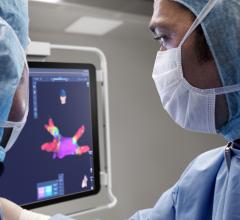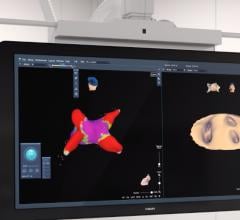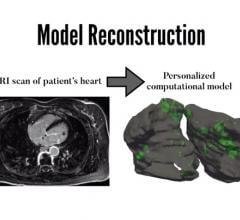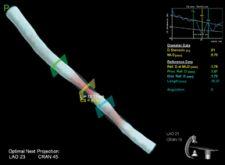
Toshiba's Infinix DP-i (dual plane) offers both cardiac and vascular flat panel detectors in one room for improved workflow, a key concern in selecting equipment for Borgess Medical Center.
Situation
Borgess Medical Center was challenged with creating a new Heart Institute that would include a state-of-the-art cardiac catheterization laboratory. As a high-volume imaging center, Borgess was seeking a group of systems that could perform cardiac, vascular and electrophysiology procedures with consistently excellent image quality. The systems needed to speed workflow, as well as share a similar platform to provide user continuity from room to room. Another key consideration was the potential vendor partnership and the vendor’s ability to install and provide long-term service support at the local level.
Solution
After an extensive survey of the catheterization laboratory systems currently available, Borgess selected six new Toshiba Infinix-i systems. These systems offered high-image quality for diagnostic and interventional procedures; superior patient access and coverage; increased speed improving department workflow; and solid communication networks to quickly move patient data. In addition, Toshiba’s reputation for being committed to product quality and stellar service made it an ideal partner.
Benefits
• Improved Image Quality: The high-quality images and resolution produced by Toshiba’s Infinix-i systems increased clinical capabilities.
• User-Friendly Design: The user-friendly design of the Infinix-i positioners allowed staff to easily learn the systems and comfortably work with them everyday.
• Consistency and Uniformity: Toshiba’s Infinix-i systems offered more uniformity and consistency than other flat panel systems available, a key concern in selecting equipment for the new Heart Institute.
• Increased Speed: The speed of the new Infinix-i systems helped increase the number of patients Borgess Medical Center could schedule, a critical element for this high-volume imaging center.
Borgess Medical Center, known for having one of the largest and most prestigious open heart surgery programs and cardiovascular laboratories in the Midwest, was challenged with the task of designing a new Heart Institute with a state-of-the-art catheterization laboratory as its foundation.
As a high-volume teaching center associated with Michigan State University, the Heart Institute would be used for diagnosing and treating a range of heart and vascular conditions. The most important factors when purchasing new catheterization laboratory systems for the Heart Institute included image quality, speed, user-comfort and uniformity of equipment.
Tim A. Fischell, M.D., was dedicated to selecting the best catheterization laboratory systems available, as he had broad experience working with a variety of systems prior to joining Borgess Medical Center.
In order to make the best decision regarding what line of equipment to use, Dr. Fischell and Borgess Medical Center administrators conducted an extensive study to review all of the options currently available on the market.
Choosing a Cath Lab
“In my mind, everything starts and stops with image quality, so we needed the best systems available to create a truly remarkable Heart Institute here at Borgess,” explained Dr. Fischell. “I knew from my past experience working with Toshiba systems that they offered this high-level image quality, so we made sure to include Toshiba in our product review process.”
Dr. Fischell and Borgess representatives pulled together an experienced team to conduct a competitive analysis by surveying several flat panel catheterization laboratory systems available. The team consisted of physicians, administrators, technologists and members of the purchasing group.
Due to the hospital’s requirement that the systems perform a wide array of procedures, multiple site visits were required to address all aspects of clinical use. During each visit, various team members accessed image quality, user interface, network connectivity, overall system workflow and the total value of the system offering.
“We looked at all of the competitive vendors offering flat panel imaging for our cardiac catheterization laboratory. After comparing the features, software and image quality, it was clear to us that Toshiba had the best flat panel catheterization equipment available for cardiac imaging,” Dr. Fischell explained. “In addition, Toshiba’s Infinix-i system is very uniform, consistent and offers better quality than what we saw in other flat panel systems.”
Another key factor in the decision was Toshiba’s ability to offer system configurations like no other provider in the industry. One of the systems selected was the Infinix DP-i (Dual Plane), which provides the ultimate in cardiovascular imaging and procedure management. The system is configured with two independent imaging planes, one designed for cardiac and one designed for vascular imaging, allowing the clinician to select the best panel for the anatomical region of interest. This is especially helpful for patients who present multiple conditions. Therefore, in one room, using one Infinix DP-i system, multiple examinations can be conducted with optimal image quality without moving the patient.
The entire process took several months and resulted in the team selecting six Toshiba Infinix-i systems to serve as the foundation of the Borgess Medical Center’s new Heart Institute.
Creating a New Heart Institute
With limited time to complete the new Heart Institute, the Borgess team and Toshiba sales representatives worked together to meet a rigorous design and installation timeline.
Due to the size and magnitude of the project, the Toshiba sales team played a key role in continually defining and communicating the customer requirements, scheduling site visits and coordinating support from other Toshiba departments, such as site planning, service and system application needs. Toshiba team members attended meetings frequently and worked with hospital construction crews to develop a plan to install six systems in rapid sequence to ensure the systems were available for use in a timely manner. This approach made it easy to keep Borgess administrators up to date on the Heart Institute changes and progress.
New and Improved
In the fall of 2005, the installation of six Toshiba Infinix-i systems at Borgess Medical Center’s new Heart Institute were complete. The result was a state-of-the-art Heart Institute that could accommodate the heavy teaching volume associated with Michigan State University as well as Borgess Medical Center’s own cardiac cath lab patient needs.
The Infinix-i systems enhance the overall patient experience and care by delivering consistent high-image quality. Toshiba’s C-arm range of motion provided exceptional access to patients and unprecedented anatomical coverage. This access and coverage have increased the clinician’s confidence to acquire necessary imaging angles in less time with less patient movement for both diagnostic and interventional examinations.
Another key benefit and standard feature of the Infinix-i product family is the powerful multitasking digital processor. This provides parallel processing to simultaneously perform image acquisition, image transfer or post-processing, which speeds up overall department workflow and reduces examination time.
Dr. Fischell routinely utilizes the advanced imaging technology of a CV-3D workstation. This technology works in conjunction with the Infinix-i system and utilizes two acquired images to reconstruct a 3D view of the primary coronary arteries. This 3D display permits viewing the coronary vascular tree from many different angles to assist with accurate lumen and lesion measurements, which enables a more accurate diagnosis and better treatment planning.
“Due to the size and nature of our Heart Institute, Toshiba sales and applications specialists developed a custom training program that included a week of pre-training for a large group of technologists to provide advanced focused training,” noted Dr. Fischell. “This prepared the staff for the additional hands-on patient training sessions that ensued for dedicated cardiac, angiography and electrophysiology procedures. Toshiba’s overall training program helped our staff successfully hone skills on the features we use every day.”
Soon after the new Infinix-i systems were installed, Toshiba’s applications specialists arrived at Borgess for the second phase of the training to ensure the technologists were able to put their classroom learning to work in the real clinical environment. Toshiba rounded out its training program for Borgess with the return of application specialists six-to-eight weeks later for a final round of onsite training.
“We are very pleased with our Toshiba Infinix-i systems and know we made the best decision for our Heart Institute,” explained Dr. Fischell. “Historically, there has not been much uniformity with flat panel systems, but this is an area where Toshiba shines. The Infinix’s uniformity, resolution and imaging quality, especially its fluoroscopic imaging ability, are all top-notch. In addition, the equipment’s positioners make it user-friendly equipment that people can work with every day.
“In my mind, Toshiba is the number one imaging vendor in the U.S. Toshiba’s Infinix-i systems are clearly ahead of other catheterization laboratory systems and offers the best technology, image quality and versatility on the market,” Dr. Fischell concluded.
Borgess Medical Center has been utilizing the Toshiba Infinix-i systems since October 2005. Borgess is very pleased with the overall system performance, the impact the systems have had on the Heart Institute and service they have received from Toshiba America Medical Systems.

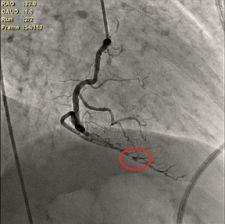
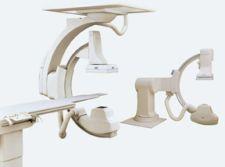

 May 15, 2023
May 15, 2023 




